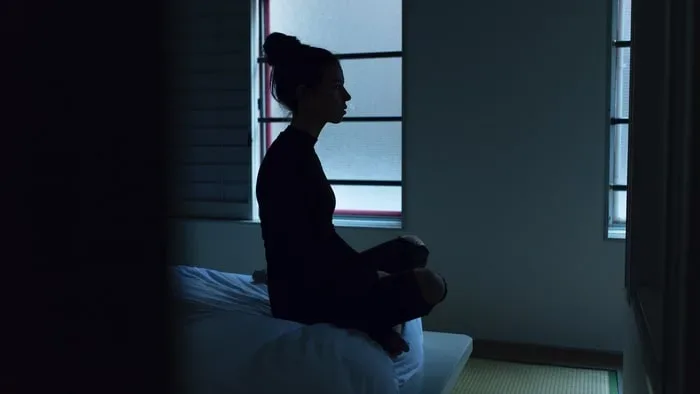
There are two types of anxiety that people can experience: normal, healthy anxiety, and excessive worrying that takes over an individual’s life. The latter is considered an anxiety disorder. These are usually chronic conditions, but they can be effectively managed with treatment.
If you’re concerned about yourself or a loved one, you’re not alone. About 18 percent of adults and 8% of adolescents in the United States have an anxiety disorder. Here is an overview of the different types of anxiety and their symptoms.
Generalized Anxiety Disorder (GAD)
People with generalized anxiety disorder worry excessively about a variety of common things, including finances, personal safety, job security, and family members. It’s important to distinguish between ordinary worry and excessive worry. Most people will experience anxiety in these areas of their lives, usually for a specific, logical reason. By contrast, someone with GAD will frequently worry for no identifiable reason. Their anxiety interferes with their daily functioning.
Symptoms of Generalized Anxiety Disorder
The Diagnostic and Statistical Manual of Mental Disorders, 5th Edition (DSM-5) provides the following criteria for diagnosing generalized anxiety disorder.
- Excessive anxiety about a variety of subjects happens most days for at least six months.
- Difficulty controlling this anxiety.
- Three or more of the following symptoms:
- Restlessness, feeling on-edge
- Fatigue
- Difficulty concentrating or a feeling that one’s mind has gone blank
- Irritability
- Muscle tension
- Trouble falling or staying asleep, or having restless, unsatisfying sleep
- Anxiety is not better explained by another mental disorder. For example, someone with PTSD experiences anxiety specifically related to a traumatic event.
- The anxiety, worry, or physical symptoms cause severe distress or impairment in normal functioning.
- The symptoms cannot be attributed to substance use (including prescription medication) or another medical condition.
If you seek out an official diagnosis, you may be asked to rate the severity of these symptoms on a scale, like the Generalized Anxiety Disorder 7-item scale.
Obsessive Compulsive Disorder (OCD)
Most people associate Obsessive Compulsive Disorder with outward symptoms like excessive hand-washing, but it also includes persistent thoughts that lead to repetitive behaviors. People with OCD perform these behaviors to provide temporary relief from their intrusive thoughts and may experience anxiety if they do not act out specific behaviors.
There are different manifestations of OCD, but some of the most common include:
- Fear of germs accompanied by compulsive washing (of hands, clothes, surfaces of the home, etc.)
- Unwanted thoughts about taboo subjects like sex or harm to self or others
- Compulsive rearranging of items so that they are neat and symmetrical.
Symptoms of Obsessive Compulsive Disorder
Here are the diagnostic criteria from the DSM-5:
- Recurrent and unwanted thoughts urges, or images that cause anxiety and distress (obsessions).
- The individual may try to ignore or suppress these obsessions, or alleviate them with another thought or action.
- Repetitive behaviors or mental acts (i.e. counting or mentally repeating words) that the individual feels compelled to perform (compulsions).
- The goal of compulsions is to either relieve distress or avoid a negative situation, but the actions are excessive and/or not realistic to that goal.
- The obsessions or compulsions are time-consuming (generally taking more than an hour per day)
- The symptoms cause severe distress or impairment in daily functioning.
Panic Disorder
Panic disorder is characterized by frequent and unexpected panic attacks, as well as fear of experiencing another attack. A panic attack is a short episode where you experience extreme fear and a variety of other physical or mental symptoms. Though they involve an intense feeling of fear or dread, panic attacks are not related to a real, concrete threat. Note that anyone can experience panic attacks, but panic disorder is a chronic condition.
Symptoms of Panic Disorder
The DSM-5 uses these symptoms to diagnose panic disorder:
- Fear of triggering another panic attack
- Significant negative changes in behavior related to the attacks.
- Recurrent and unexpected panic attacks that consist of four or more of the following symptoms:
- Rapid heart rate, palpitations, or pounding heart
- Shortness of breath
- A choking feeling
- Sweating
- Shaking
- Chills
- Heat sensations
- Nausea
- Abdominal pain
- Chest pain
- Headache
- Dizziness, lightheadedness or feeling faint
- Numbness or a tingling sensation
- Detachment from self (depersonalization) or feelings of unreality (derealization)
- Sense of danger or dread
- Fear of loss of control
- Fear of death
People with panic disorder can also develop agoraphobia, a fear of being in open, crowded, or confined places. Their agoraphobia is often related to fears of triggering another panic attack, or being unable to escape the area should a panic attack occur.
Post-traumatic Stress Disorder (PTSD)
A common misconception about post-traumatic stress disorder (PTSD) is that it primarily affects soldiers. In reality, anyone can develop PTSD. The disorder is triggered by a traumatic event such as physical or sexual assault, natural disasters, accidents, or other life-threatening situations.
You don’t have to experience a traumatic event firsthand in order to develop PTSD. For example, if you learned that a close family member was murdered, or if you work as a paramedic and frequently come in contact with injury and death, you could be at risk.
Symptoms of PTSD
PTSD involves a variety of cognitive, behavioral, and emotional symptoms. One of the key features of this disorder is flashbacks or intrusive memories of the traumatic event. Recurring nightmares are also common. PTSD symptoms must last more than one month; individuals experiencing these symptoms for a month or less are diagnosed with acute stress disorder.
Social Anxiety Disorder
People with social anxiety disorder dread social situations. A variety of scenarios can trigger anxiety for these individuals, from public performances such as giving a speech or presentation, to everyday situations like talking to new people at a party. The effects can be so debilitating that the individual avoids most or all social activities. This often leads to low self-esteem and even depression.
Symptoms of Social Anxiety Disorder
According to the DSM-5, these are the main symptoms of social anxiety disorder.
- Consistent anxiety about social situations that could potentially lead to judgment from other people (i.e. meeting new people, eating in public, giving a presentation, interviewing for a job).
- Anxiety is disproportionate to the situation.
- The anxiety is disruptive to the individual’s life.
- The individual fears acting in a way that will be embarrassing, offend others or lead to rejection.
- The individual avoids social situations and experiences extreme fear when facing such a situation.
- Symptoms last six months or more.
Treatment Options for Anxiety Disorders
Anxiety disorders can disrupt your life, but there are effective treatments available. A doctor or a mental health professional will be able to suggest different treatment methods and adjust them for the best results. Treatment might involve medication, therapy, or both. You may participate in group or individual counseling sessions and see a psychiatrist for medication management.
Learn about treatment with The Light Program.
Co-occurring Anxiety Disorders
Individuals can be diagnosed with more than one mental health disorder, and even multiple anxiety disorders. These are known as co-occurring disorders since they are both present at the same time. There can be any number of combinations: social anxiety and panic disorder, PTSD and substance use disorder, general anxiety disorder and depression, etc. When someone has co-occurring disorders, all of the disorders must be treated for the best outcomes.
If you or someone you know is experiencing symptoms of an anxiety disorder, it may be time to seek a mental health evaluation. A mental health professional can tell you whether your anxiety levels are normal or if they indicate a disorder. If you live in southeastern Pennsylvania, The Light Program has several treatment centers in the region that offer evaluations. Contact us to schedule an assessment.
References:
- https://adaa.org/understanding-anxiety/generalized-anxiety-disorder-gad
- https://www.mayoclinic.org/diseases-conditions/generalized-anxiety-disorder/symptoms-causes/syc-20360803
- https://www.healthline.com/health/
anxiety/generalized-anxiety-disorder - https://www.hhs.gov/answers/mental-health-and-substance-abuse/what-are-the-five-major-types-of-anxiety-disorders/index.html
- https://www.beyondblue.org.au/the-facts/anxiety/types-of-anxiety
- https://www.nimh.nih.gov/health/topics/obsessive-compulsive-disorder-ocd/index.shtml
- https://adaa.org/understanding-anxiety/panic-disorder
- https://www.mayoclinic.org/diseases-conditions/panic-attacks/symptoms-causes/syc-20376021
- https://www.mayoclinic.org/diseases-conditions/post-traumatic-stress-disorder/symptoms-causes/syc-20355967
- https://www.webmd.com/anxiety-panic/guide/mental-health-social-anxiety-disorder
-
- https://adaa.org/understanding-anxiety
- https://www.integration.samhsa.gov/clinical-practice/GAD708.19.08Cartwright.pdf
- https://www.ncbi.nlm.nih.gov/books/NBK519704/table/ch3.t15/
- https://www.ncbi.nlm.nih.gov/books/NBK519704/table/ch3.t13/
- https://www.ncbi.nlm.nih.gov/books/NBK519704/table/ch3.t10/
- https://www.healthline.com/health/panic-disorder-with-agoraphobia
- https://www.ncbi.nlm.nih.gov/books/NBK207191/box/part1_ch3.box16/
- https://www.ptsd.va.gov/understand/related/acute_stress.asp
- https://www.webmd.com/anxiety-panic/guide/mental-health-social-anxiety-disorder#2
- https://www.ncbi.nlm.nih.gov/books/NBK519712/table/ch3.t12/






